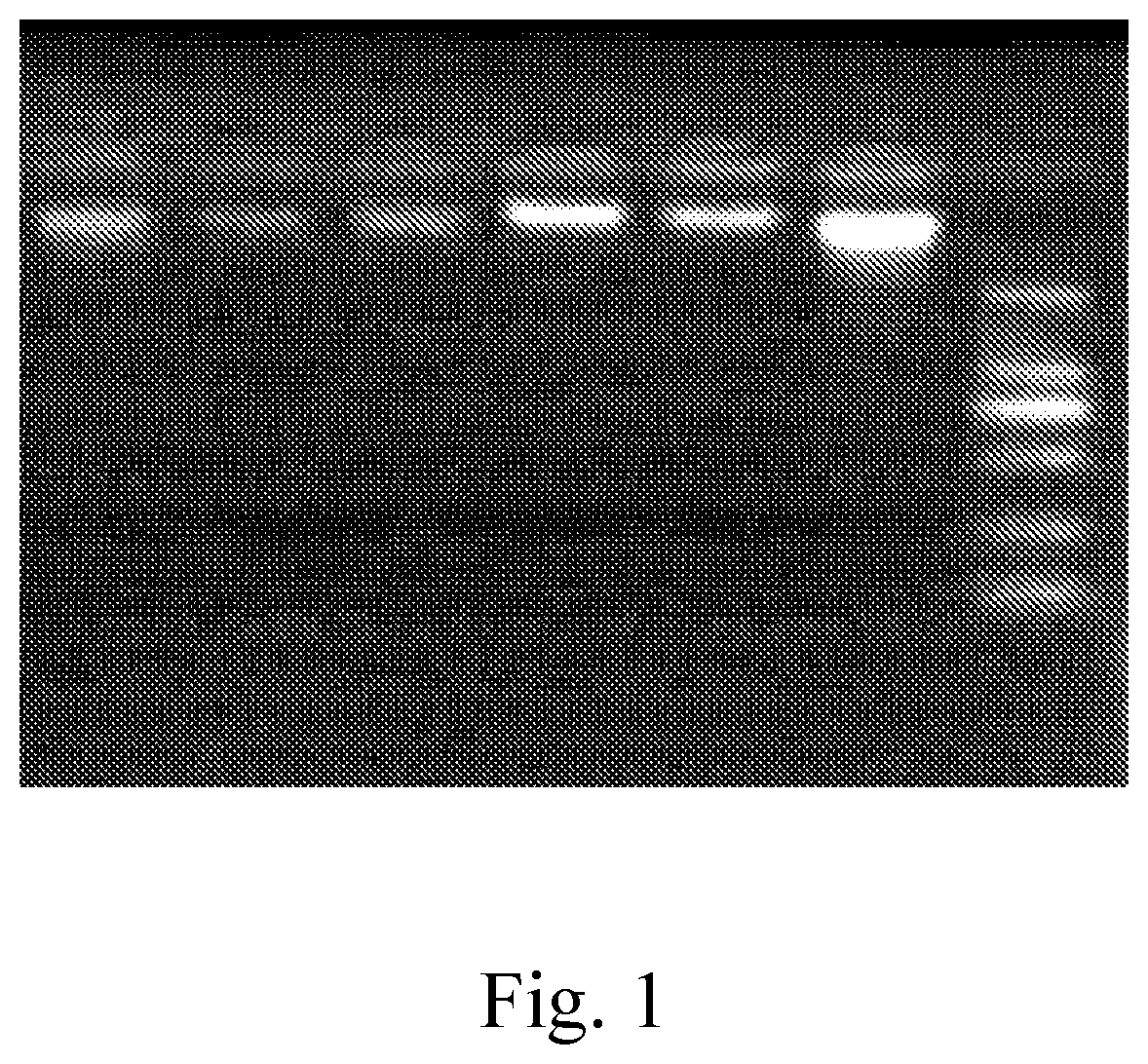Method for extracting total microbial DNA from milk
a technology of microbial dna and extract method, which is applied in the field of food quality and safety, can solve the problems of complex and costly prior art methods for extracting milk microbial dna, inability to identify all types of microorganisms that may be contained in milk only by culture method, and low concentration and purity
- Summary
- Abstract
- Description
- Claims
- Application Information
AI Technical Summary
Benefits of technology
Problems solved by technology
Method used
Image
Examples
example 1
n of Total Microbial DNA from Milk
[0041]1. Milk Pre-Treatment:
[0042]The milk sample was thawed at 4° C. 7 ml of the milk sample was placed in a 10 ml centrifugal tube, and centrifuged at 14000 g for 5 min. The supernatant was discarded, and the fat was removed by using sterilized cotton swabs. 3 ml of TE solution was added. The solution was repeatedly pipetted up and down with a pipetting gun to destroy the casein micelles until the precipitate was completely dissolved. The mixture was centrifuged at 14000 g for 5 min. The supernatant was discarded, and the residual fat was removed. The precipitate was retained.
[0043]2. Microbial Lysis:
[0044]1000 μL of the CTAB lysate was added to the precipitate obtained in step 1. The mixture was repeatedly pipetted up and down with a pipetting gun until the precipitate was completely dissolved. The mixture was transferred to a 2 ml sterile centrifuge tube. Glass beads were added to perform cell disruption (30 m / s, 1 min) in a bead mill. The cell ...
example 2
ation of Microbial Species in Milk
[0051]1. Primer Design and Synthesis
Upstream primer:SEQ ID NO: 127F: 5′-AGAGTTTGATCCTGGCTCAG-3′,;Downstream primer:SEQ ID NO: 21492R: 5′-GGTTACCTTGTTACGACTT-3′,.
[0052]2. PCR Reaction
[0053]The DNA dissolved in 100 μL of TE solution in step 4 of Example 1 was used as the DNA template for PCR amplification.
[0054]The PCR reaction system had a volume of 50 μL and contained the following solutions or reagents:
[0055]3 μL DNA template, 2 μL upstream primer (200 nM), 2 μL downstream primer (200 nM), 5 μL dNTPs (10 μM), 10 μL 5×PCR buffer, 0.4 μL high-fidelity Taq DNA polymerase (Takara), and the balance of PCR-grade sterile water.
[0056]The PCR reaction conditions were set as follows:
[0057]Pre-denaturation at 95° C. for 3 min; denaturation at 95° C. for 30 s; renaturation at 55° C. for 30 s, extension at 72° C. for 1 min, 30 cycles; storage at 4° C. after extension at 72° C. for 10 min.
[0058]The PCR product was identified by electrophoresis:
[0059]1.5% agarose...
example 3
[0062]1. Two samples of the same milk were taken, each of 7 ml. The experimental group was extracted for DNA by the same method as used in Example 1. The only difference between the control group and the experimental group was that TE solution was not added during milk pre-treatment of step 1 in the control group.
[0063]The DNA extracted from the experimental and control groups were dissolved in 100 μL of TE solution, respectively, and the concentrations and purities of the DNA were determined by the same method as used in Example 1. The concentration of the DNA extracted in the experimental group with TE solution and that of the DNA of the control group without TE solution were 42.5 ng / μl and 21.5 ng / μl, respectively, and the OD260 / OD280 ratios were 1.85 and 1.64, respectively.
[0064]2. Two samples of the same milk were taken, each of 7 ml. The experimental group was extracted for DNA by the same method as used in Example 1. The only difference between the control group and the exper...
PUM
| Property | Measurement | Unit |
|---|---|---|
| Temperature | aaaaa | aaaaa |
| Temperature | aaaaa | aaaaa |
| Temperature | aaaaa | aaaaa |
Abstract
Description
Claims
Application Information
 Login to View More
Login to View More - R&D
- Intellectual Property
- Life Sciences
- Materials
- Tech Scout
- Unparalleled Data Quality
- Higher Quality Content
- 60% Fewer Hallucinations
Browse by: Latest US Patents, China's latest patents, Technical Efficacy Thesaurus, Application Domain, Technology Topic, Popular Technical Reports.
© 2025 PatSnap. All rights reserved.Legal|Privacy policy|Modern Slavery Act Transparency Statement|Sitemap|About US| Contact US: help@patsnap.com

